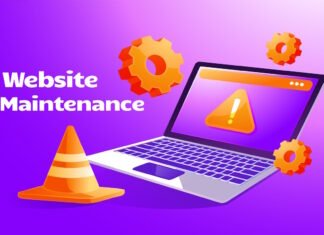A fraud prevention analyst works to prevent fraudulent transactions and protect bank accounts from theft. Their duties include analyzing data to identify suspicious transactions, researching new methods of criminal fraud and implementing security systems.
This career requires strong communication skills and knowledge of digital technology. It also requires working with law enforcement officials and company leaders to gather evidence.
Identifying Suspicious Transactions
A fraud prevention analyst can identify suspicious transactions by analyzing financial data. This can include credit card transactions and cash withdrawals. Fraud prevention analysts work for banks and other financial institutions to help reduce the risk of theft or forgery.
These professionals also monitor transaction queues to prevent high-risk transactions from occurring. They typically use sophisticated fraud detection tools and software solutions to monitor real-time transactions.
They may also conduct data analysis and create reports using these tools. This allows them to spot suspicious transactions before they occur.
To effectively identify suspicious transactions, fraud prevention analysts need to have a strong understanding of the financial industry. They also need to be able to analyze large amounts of data and make informed decisions.
Their communication skills are crucial to this role, as they need to be able to communicate with customers and other members of the team. They must also identify minor inconsistencies or anomalies that may indicate fraudulent activity.
In addition, fraud prevention analysts need to understand relevant laws and regulations. This includes privacy laws, data protection laws, and other related regulations.
They must also be able to develop fraud prevention techniques that can be implemented at a company. This can include identifying security weaknesses, evaluating existing security systems, and recommending solutions.
Collecting Evidence
Fraud prevention analysts must be able to collect evidence that can prove or disprove allegations of fraud. This evidence may be physical (like fingerprints, blood, and hair) or digital (like computer documents, email, and text messages).
The key to the successful collection of evidence is proper documentation and storage. This is important for physical and electronic evidence and maintaining evidence chain-of-custody standards.
In addition, collecting evidence can also be complicated by factors such as environmental contamination. As a result, forensic investigators develop protocols to preserve evidence.
For example, investigators should place most evidence into paper containers, like bags or envelopes, to safely transport and store it. This minimizes moisture and environmental deterioration that may destroy trace evidence, such as DNA or paint flakes.
Similarly, investigators should not place wet or liquid evidence into plastic containers without putting it in a smaller, leak-proof container (e.g., a glassine bindle, canister, Teflon-lined screw cap glass vial, bottle/jar).
As part of your investigation, you must interview witnesses and suspects who may have information about the case. This includes individuals who worked with the person suspected of fraud and friends, family members and colleagues who may know their personal history that corroborates or contradicts the allegation.
Developing Fraud Prevention Techniques
Fraud prevention techniques are a way for businesses to protect themselves from fraudulent behavior’s financial and reputational harm. These strategies include setting up detection systems, educating employees and customers, and strengthening cybersecurity.
A fraud analyst must know how and where fraud happens to develop prevention techniques. They also need to understand how fraudsters gain access to sensitive information, assets, and company data.
One of the most common fraud methods is asset misappropriation. This is when someone steals or manipulates a company’s assets, such as cash, inventory, or equipment. Other types of fraud are money laundering, corruption, insider trading, and cybercrime.
Using fraud prevention techniques, a fraud prevention analyst can detect and stop fraudulent activities that affect a business’s finances or reputation. They can also identify suspicious transactions and prevent them from occurring in the first place.
A fraud prevention analyst can use data mining and machine learning to identify patterns that suggest fraudulent activity. These algorithms can be used to search through millions of data points and flag suspicious-looking behaviors for further investigation by a human analyst.
A fraud prevention analyst can also work to protect a business from the effects of fraud through regular monitoring and documentation. This is especially important in regulated industries, where law compliance is required.
Tracking Financial Data
Fraud prevention analysts track financial data to sift through suspicious transactions and identify patterns that may indicate fraud. This includes examining the transaction type, the transfer amount, the place where it originated, or a series of transactions that seem out of character.
Modern banks use sophisticated fraud detection tools to sift through millions of real-time transactions. These tools help detect high-risk transactions and halt them before they happen.
These systems are based on machine learning techniques designed to learn from and adapt to new threats automatically. These systems can be customized to the needs of each bank.
Moreover, they can also be integrated with other digital channels to sift through suspicious transactions in real time. This helps financial institutions mitigate fraudulent attacks without causing unnecessary friction to the customer session.
A fraud analyst must be able to monitor all the transactions that come through their system and flag any suspicious activity. They can then use that information to improve their techniques and prevent future incidents.
Another critical skill for a fraud analyst is attention to detail. This is essential as they regularly review large volumes of data and monitor real-time transactions for discrepancies.
Fraud analysis can be a very challenging job. However, it can be rewarding as well. It can lead to various career opportunities and help you build your portfolio of skills. Many fraud analysts work their way up to management and leadership roles.
















